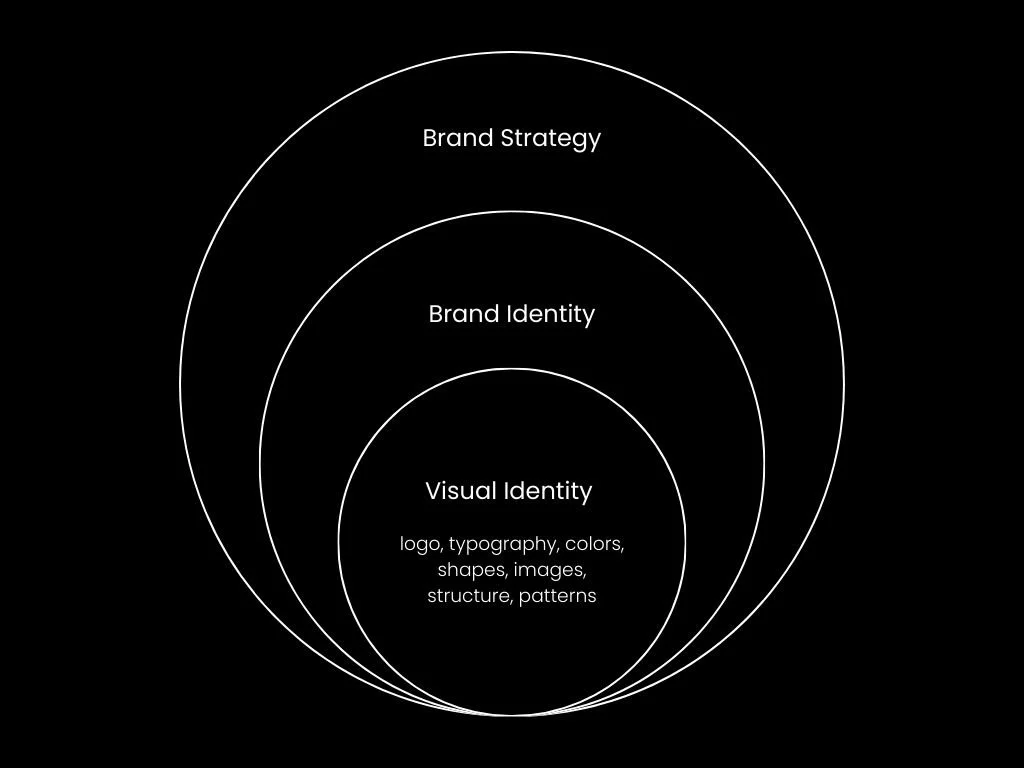Visual Identity: Where Branding meets Design
Many of us find it hard to understand how design is related to branding. We know it is, but we don’t know how. Some of us think that visual identity development is the actual branding process, while others confuse brand identity with visual identity. Let’s break this down together and understand in what way design serves branding and at which part of the branding process.
In short, the visual identity is part of the brand identity (among others), which is part of the brand strategy (among others).
The brand strategy is the result of the branding process. Branding is a strategic way of creating a brand. The goal is to make it memorable, understandable, likable, and distinct. To conceptualize a brand and bridge the gap between what it is and what people understand.
Part of the brand strategy is the development of a brand identity. Let’s use an example to understand what brand identity is in practice. Imagine your favorite Disney character—Mickey Mouse, let's say. Mickey has his own personality, voice, specific vocabulary, values, behavior, and, of course, a distinct appearance. All these things make him who he is. You can recognize Mickey on TV even at a glance. Also, it is impossible to confuse him with another character (Cruella, for example). You know it’s him when you see him, and you can easily set him apart from others. This is because he has a strong brand identity.
The most important thing that helps identify Mickey Mouse is his appearance: big round ears, a round head, big white gloves, a pair of red shorts with two white buttons, yellow shoes, and cheerful facial expressions. This is his visual identity. Here, design comes in to support a well-developed brand strategy (the brand strategy of a character, in this example). Every aspect of his appearance is created to convey meaning and be perceived in a certain way. His appearance reflects his personality while also making him likable and approachable. After almost a century, we still recognize him and experience the same feeling when seeing him. It is because his visual identity has remained almost intact, consistent through time.
The visual identity of a brand is like a Disney character’s appearance. It includes its logo, typography (letterforms), colors, shapes, imagery, structure, and layout. Everything is designed to communicate something and is not accidental. These visual elements compose a visual identity that is likable, meaningful, and practical. It should not only look great but also convey the brand’s message and values—not just today, but across decades.
Ultimately, a visual identity is a tool. It helps a brand communicate using a very powerful language—the visual language—and causes thoughts, emotions, and drives action. It says what it wants to say without talking—just through design—while still being understandable.
